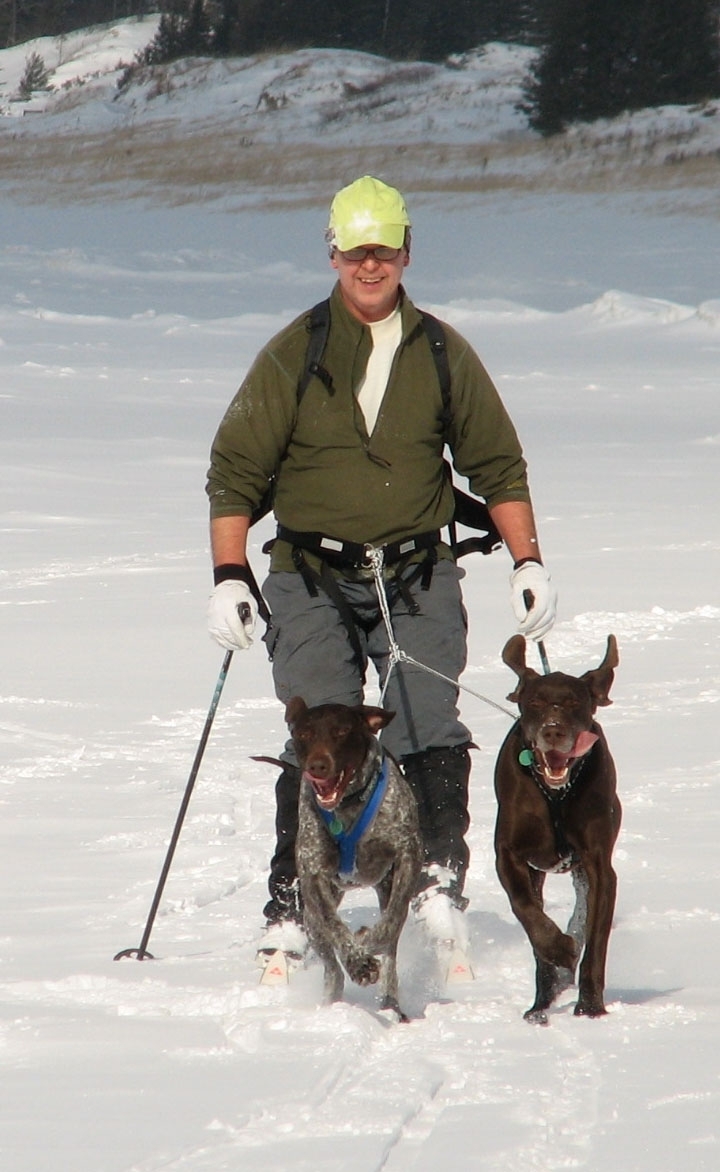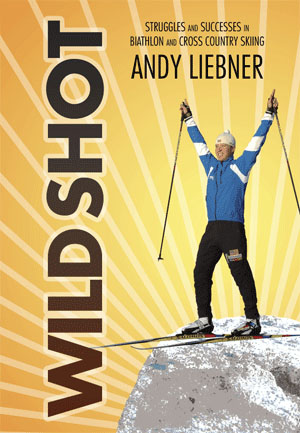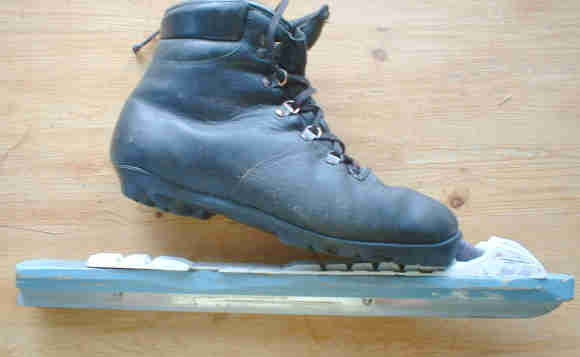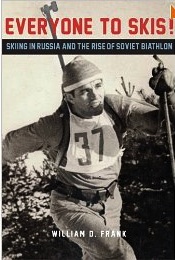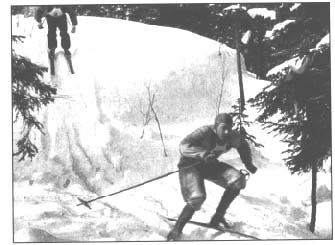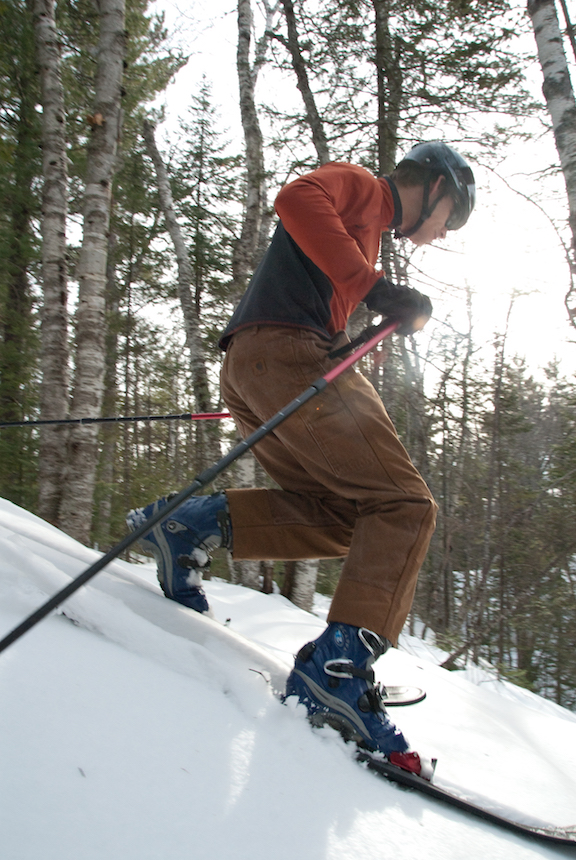Author: David Spieser
by David Spieser
You might already know that ‘skijor’ is a Scandinavian term that literally means ‘ski-driving’ and refers to the art of using draft animals harnessed to pull a skier. Skijoring can be done with any animal you can get some kind of harness on but most people use dogs. Special harnesses and ‘tug lines’ designed for the comfort of dogs and skiers are available to facilitate the activity and, while this has long been a popular sport in northern Europe and Alaska, there seems to be an increasing awareness of it now in the rest of the snowy U.S. The International Federation of Sleddog Sports, which has club affiliates in 40 countries, is working with the International Olympic Committee to get skijoring into the Winter Olympics by 2014.
If you have tried skijoring or you are considering it you might know about the excellent book by Mari Hoe-Raitto and Carol Kaynor Skijor With Your Dog. There is also a more recently published book that looks pretty good called Ski Spot Run by author Matt Hakenstad that explores not only skijoring but the wider world of dog-powered sports as well.
I was first made aware of skijoring as an activity and a sport by Jeff Potter back in the early nineties when he was still publishing his excellent magazine that preceded his currently excellent ezine, Outyourbackdoor.com. Later, while living in Alaska, I became an avid participant. Since then I have logged many miles driving dogs on skis through the backcountry of Alaska, Canada, Minnesota and especially Michigan. If you are a beginner to skijoring, or you have a strong, energetic dog and you are considering giving it a try I think there are several things you ought to know before you invest in books or equipment.
If you have a dog skijoring can be a most excellent way to enjoy a deeper, working relationship while you both get a great workout. It can also be a really good way for one or both of you to get discouraged and/or injured if you get off on the wrong track. First, consider if you and your dog are really up for it. The popular myth about skijoring is that it is a lazy persons way to ski. Almost every time we encounter other skiers on the trail they remark about how I am somehow taking the easy way. “Now that’s the way to go!” they say, or “Come on now, that’s cheating!” Most people, unless they are already avid and competitive skiers, are surprised to discover that when they are attached to a dog in harness they ski harder than they ever have before. I ski all the time. I have skied and skijored for years; but usually when I skijor, except in the most ideal snow conditions for glide, it is not long before my heart is pounding, my legs are shaking and I am drenched with sweat.
Your dog should be at least 40 pounds; much less than this and you might just find you are skiing along with a dog attached to you. Bigger is not necessarily better. Many of the pros prefer dogs that are less than 65 pounds. In my experience, if you are skijoring with just one dog it helps if they are on the larger, more powerful side; 60 + pounds. Two strong, eager 50-60 pounders will usually outrun any larger dogs especially in longer distances.
The breed of the dog is not especially important; either it likes to pull or it does not. However, some breeds are more predisposed to pulling than others. Of course, huskies are the undisputed champs in this department. Most of them love to pull and they can outdistance any terrestrial animal on earth as long as it’s not too hot out. For warmer temperatures (20 degrees Fahrenheit and higher) and shorter distances it is hard to beat the German pointers (they’re often winners in skijor events) but their relative lack of cold-hardiness makes overnight hauls somewhat harder. My own dogs have very short, thin coats. They do fine down to about ten degrees Fahrenheit, below that they need jackets if we stop for very long. They get discouraged when temps get much below zero. Dogs with hairy paws tend to accumulate ice between their toes unless they have booties. Even if you are looking to get a dog primarily for skijoring it helps a lot if they are versatile enough to engage in other activities during the warmer months, like fetching, swimming, cycling and hunting.
You need some space because you can cover a lot of territory fast when you are traveling this way. This is an important point because you will never realize the true essence of skijoring unless you and your dog(s) have the time and space to get into a rhythm. For my dogs and I this usually starts to occur after about three or four miles when we have warmed up and maybe stopped once, readjusted gear, pooped, peed, blew snot and stretched a bit. After this we can usually settle into a steady, mile-eating lope- and-glide as we enjoy the country passing all around us. If we must continually stop to cross roads, change direction or negotiate various obstacles the dogs are going to get impatient and discouraged. Every pause is another opportunity to get tangled up and irritable.
It is not unusual, while skijoring, to travel fifteen or twenty miles in an afternoon. Racers with one or two dogs usually cover eight miles in around a half-an-hour. So, in southeast Michigan, for instance, it is impossible to find any area where you can skijor for very long without having to cross roads. This is not an easy way to go. The least you have to do is take off your skis and then you should have good verbal control of your dog. Most dogs, especially if they are good pullers, will be all wound up and eager to go, go, go down the trail, they will not want to stand by calmly while you take off your skis and fuss with your gear. Then you might have to have to leash them as well (or switch the tug line to the collar) and then cross the road with skis and poles under one arm and the dog pulling on the other. Combine these interruptions with trails that are too narrow and curvy on hills that are too steep, deadfall across the trail, snowmobilers and lousy snow conditions and you might find that some other cool things, skijoring sounds good but maybe it’s not practical for your life situation.
You could just do a loop, continually, but most dogs will get bored with going around in circles. For them, a big part of the skijoring appeal is exploring new country even though they are harnessed. If you live in southeast Michigan the best place to skijor is Waterloo Recreation Area on the border of Washtenaw and Jackson counties. If it snows enough you can manage a relatively continuous fifteen or twenty mile run straddling M-52 and Cassidy road. The area between these roads is the largest public roadless area in the southeast part of the state with maybe the exception of the Shiawassee swamp. If you are fortunate enough to find Cassidy Road unplowed you can really ski out some distance in beautiful country without stopping especially if you utilize frozen lakes on your route. Beware though, lake ice can cut paws, so booties might be necessary. You and your dog might decide you are content with a three-or-four mile jaunt closer to home. Indeed this could be a really good way to give an energetic dog something to do beyond the daily walk in the park; but if you love to ski and your dog loves to pull when you both get synched-up you will feel like a hamster on a wheel unless you can get away and ski out some country.
Allegan State Game Area is, hands down, the best place to skijor in southern Michigan. There is usually more snow there than the on the east side of the state at that latitude and Allegan has plenty of roadless area to really make a day of it. The topography is perfect, plenty of flat-to-rolling country without many steep hills. Miles of savanna mixed with woods flanking the Kalamazoo River Valley makes the scenery exceptional.
However, every enthusiastic XC skier knows that if you live or frequent the areas of the state north of the Muskegon River watershed you will find skijor heaven nearly everywhere.
Wilderness State Park is probably the single best place to skijor in the whole lower peninsula. It has all of the ingredients, starting with many miles of wide informally-groomed trails through some of the wildest country south of the bridge and no road crossings. Sleeping Bear is really good; especially if you luck into a fresh snowmobile track left by the patrolling ranger. Pigeon River Highlands is awesome but the snow is often deep and you will likely be breaking trail if you go beyond the Shingle Mill path complex.
If this all still sounds interesting or even doable for you and your canine companion let’s get back to talking about the most important part.
Your dog might be strong and energetic, always wanting to pull, pull, pull whenever on the leash but this does not necessarily mean it will like skijoring. I have had many seemingly eager, powerful dogs just give up after ten minutes in the harness, becoming distracted by scents on the side of the trail and generally acting bored and disinterested after their initial outburst of enthusiasm for the novelty of actually running along fast with a friendly human. Every dog has off days in the harness but if your dog is (a) older than two years (b) is not used to an hour of continuous running, preferably off-leash almost every day and (c) cannot or does not want to keep up with you for at least six miles while you ride a bike at reasonable pace when the temperature is under sixty degrees Fahrenheit, then there is a good chance it will not like skijoring.
Even if your dog is in good condition I guarantee that while skijoring in the long haul it will only be willing to push it as hard as you are. Accomplished skiers might even find that they can ski faster and longer than their dog is willing to pull. Some dogs like to conserve energy; only throwing themselves into the task of pulling when they are racing another dog or they realize you are about to catch up to them. If you and your dog are both in reasonably good condition and happily pumped up about hitting the trail together than consider the next step.
Can you ski? You do not have to be a really good skier to skijor but if you are not entirely confident in your ability on the boards you should be confident in your communication with your dog. Most people are afraid of personal injury but the most likely consequence that might result from a lack of these skills is the dog getting hurt. In order to stop even the most powerful dog while you are on skis it is usually sufficient to simply sit down. A dog is naturally going to come see you, and probably frolic about and wiggle and lick, if you go down on the ground. An inexperienced skier will usually do a fair amount of thrashing about when getting up from a fall; ski poles are pointy and ski edges can be sharp so this is one easy way for a dog to get a bad cut. If you cannot unhook your dog for fear of it running away or otherwise misbehaving, much less make it stay while you attend to gear, then you had better at least be a pretty good skier before you try to skijor.
So, your level as a skier is balanced with your dog handling skills and you are both up for some adventure. You can find out the rest of what you need to know about gear and whatnot from the aforementioned books and some of the fine websites listed at the end of this article.
The exact place to skijor might depend on what kind of skier you are. In northern Michigan you have many, many options. In general the best places have wide trails that travel great distances and do not cross too many roads. Most XC areas with groomed trails frown on dogs churning up the path, but many snowmobile trails can be really good for skijoring, especially on weekdays when the traffic is low. Packed snow is a big plus anywhere you can find it. Steep hills can be a thing to avoid unless you love the thrill of carving turns and catching air. To do this you need a dog that you can unhook at the top of the hill and be sure it will stay out of the way while you indulge in speed and maneuvers on the way down. A dog with ski etiquette is essential for this; being crowded on a rapid descent is annoying and dangerous. However, a dog with good ski etiquette is like a mobile tow-rope. Being able to hook in and out of the harness at will on a hilly trail like the Potwatami makes skijoring with a good dog a total blast. Skijoring with a fast, powerful dog or two makes a mellower trail an absolute joy ride. Trails are usually better than open fields and lakes because the dogs tend to get confused when the direction is not obvious.
Snowmobile trails are everywhere. Formally groomed ones are flatter across and wider; ungroomed snowmobile trails can be very rough, uneven surface to ski on but they are still easier on the dogs than six or more inches of unpacked snow. Obviously the least traveled ones are the best.
So, if skijoring works out for you and your dog I think you will find yourself seeking opportunities for uninterrupted distance. Keeping up momentum and staying in a rhythm keeps the dogs happy and running smooth; stopping a lot invites restlessness. Skijoring for me is about exploring the vast backcountry alone with your dog(s) in a synchronized working relationship. Various lodges and dog-sledding resorts offer skijoring dogs as part of their programs, but missing from this experience is the personal relationship with your own dog—the sense of companionship that comes from being on your own together in the open wild. No dog will pull for you like your own good buddy.
Helpful sites:
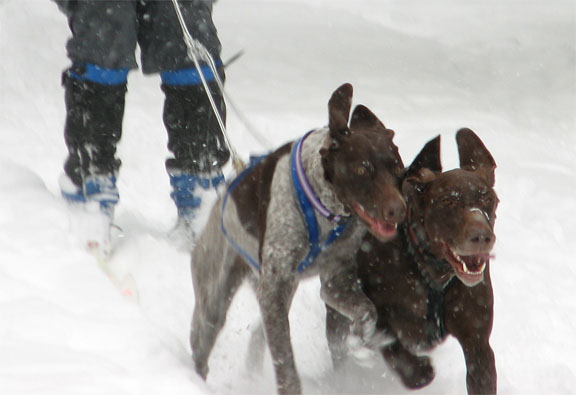
Hard chargers!
Getting closer!
Dave, Fudge and Raisin flying down the beach in the frozen up north…
